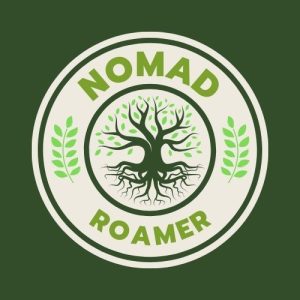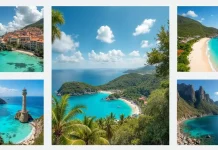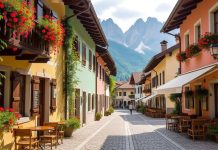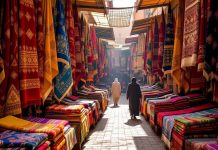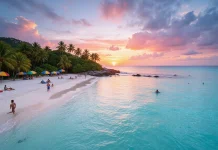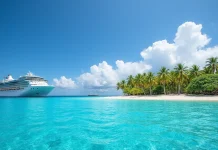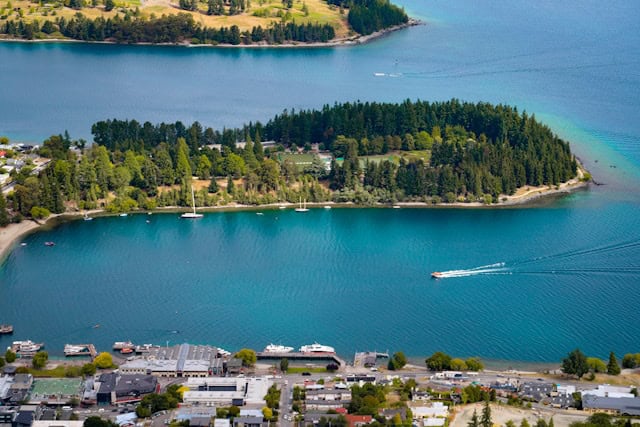A Dive Into Rich Histories: Noteworthy Caribbean Historical Sites
The Caribbean is an elaborate tapestry woven with the threads of indigenous cultures, colonial conquests, and revolutions. Each island in the Caribbean offers a unique tapestry of historical sites that serve as windows into its vivid past. Visiting these sites can transport you back in time to the eras of pirates, European colonizers, and African slaves, creating a multi-dimensional narrative that enchants the historically curious traveler.
Exploring the Wonders of Cuban Heritage
Havana's Old Town (Habana Vieja)
Strolling through the cobblestone streets of Habana Vieja is akin to stepping into a time capsule. This UNESCO World Heritage site is filled with vibrant plazas, baroque structures, and colonial fortifications. Visiting landmarks such as the Castillo de la Real Fuerza and the Cathedral of Havana gives visitors a glimpse into Cuba’s rich colonial past. Each building tells a story, from the bustling Plaza Vieja to the resplendent interiors of the Palacio de los Capitanes Generales, offering a kaleidoscope of the island's Spanish colonial history.
Valle de Viñales: Cuba's Archaeological Haven
Beyond the city, the Valle de Viñales provides a more natural lens on Cuban history. This lush valley is not only a UNESCO World Heritage site for its natural beauty but also harbors archaeological remnants of its first inhabitants, the TaÃno people. Visits to ancient cave systems, like the Cueva del Indio, reveal petroglyphs and artifacts that speak of a time before European contact.
Dominican Republic: Cradle of the New World’s History
Santo Domingo's Colonial Zone
As the first permanent European settlement in the Americas, Santo Domingo's Zona Colonial deserves its place as a cornerstone of Caribbean history. This UNESCO site houses the first cathedral, the Catedral Primada de América, and the first hospital built in the New World. Wandering through the Alcázar de Colón, visitors can envision the opulent lifestyle of Diego Columbus, the son of Christopher Columbus. The fortresses and intricate network of cobbled streets weave a compelling narrative of Dominican resilience and adaptation.
La Isabela: Echoes of Spanish Exploration
Further north, the ruins of La Isabela whisper tales of Christopher Columbus's ambitious endeavors. As one of the first European towns on the continent, La Isabela presents visitors with a panorama of exploration feats. The modest ruins offer subtle insights into the daily lives of early Spanish settlers and their initial interactions with indigenous cultures.
Jamaican Heritage: A Melange of Influence
Port Royal: Jewel of the Caribbean
Port Royal, once known as the “wickedest city on earth,” is steeped in the swashbuckling history of pirates and privateers. The town's fate changed catastrophically with the 1692 earthquake, effectively turning this bustling harbor into a sunken relic of a bygone era. Today's explorations include the Fort Charles museum and the sunken city archaeological sites, shedding light on Jamaica's vibrant piracy days.
Maroons of the Blue and John Crow Mountains
Within the lush Blue and John Crow Mountains, the stories of runaway African slaves, also known as Maroons, echo powerfully. This UNESCO World Heritage site is more than a natural wonder; it’s a celebration of Afro-Jamaican culture and resilience. Hikes through the mountains are journeys through history, often culminating in a visit to a Maroon village where traditional songs and dances celebrate a hard-fought freedom.
Barbados: A Legacy of Colonial Era Grace
Historic Bridgetown and Its Garrison
In Barbados, Historic Bridgetown, coupled with its well-preserved Garrison, offers a seamless blend of British colonial architecture and West Indian culture. This UNESCO site symbolizes the island’s strategic importance during the height of European colonization. The Parliament Buildings and the abundance of Georgian and Jacobean structures capture the essence of British rule, while the Garrison Savannah speaks to the island’s military significance.
St. Nicholas Abbey: A Living Relic
St. Nicholas Abbey is more than a plantation house; it’s a window into the plantation past of Barbados within a Jacobean architectural marvel. Visitors can explore beautiful gardens, savor rum tastings, and learn about the plantation’s former sugar production — inviting reflections on the socio-economic impacts of the sugar trade.
The Rich History of Haiti: The First Black Republic
Citadelle Laferrière: A Monument to Freedom
Haiti’s Citadelle Laferrière, a stupendous mountain fortress, stands as a gargantuan monument to freedom and resilience. Commissioned by Henri Christophe after Haiti’s independence, the structure is both an engineering marvel and a symbol of the island's defiance against European colonial powers. The trek to the Citadelle is both enlightening and spiritual, offering sweeping views of the surrounding countryside and tales of revolutionary valor.
Sans-Souci Palace: Echoes of a Revolutionary Past
Nearby lies the Sans-Souci Palace, once the opulent residence of King Henri Christophe. Now in ruins, the palace evokes a sense of grandeur, social upheaval, and the turbulent post-independence period. Exploring the grounds offers insights into Haiti’s ambitions as an autonomous nation-state and its complex societal evolution.
Trinidad and Tobago: Celebrating Cultural Divergence
La Brea Pitch Lake: A Natural Wonder with Historical Significance
The La Brea Pitch Lake, although primarily a geological marvel, is densely intertwined with the history of Trinidad and Tobago. This naturally occurring asphalt lake is steeped in Amerindian mythology and was crucial in the island’s industrial development. Local guides offer stories of how the indigenous peoples revered and utilized this natural resource long before the island witnessed European contact.
The Magnificence of Magnificent Seven
In Port of Spain, the Magnificent Seven are a collection of colonial-era mansions highlighting Trinidad’s diverse cultural influences and British colonial past. From the eccentric architecture of Queen's Royal College to the Moorish influences of Stollmeyer's Castle, these structures narrate tales of wealth, societal privilege, and the island's colonial stratification.
French Influence and Revolutionary Spirit: Martinique
Saint-Pierre: The Pompeii of the Caribbean
Saint-Pierre, once known as the “Paris of the Caribbean,” offers a poignant reminder of nature’s might with the cataclysmic eruption of Mount Pelée in 1902. The remnants of structures, old theaters, and the theater ruins echo the island’s colonial affluence and creativity. Walking through these ruins takes visitors on an emotional journey through Martinique's colonial past, abruptly halted by natural disaster and resilience.
Imperial Fortifications: Fort Saint Louis
Fort Saint Louis stands as a testament to the island’s strategic military importance during the colonial period. Its well-preserved bastions and barracks provide panoramic views of the bay, serving as a reminder of French imperial machinations. Visitors enjoy exploring these fortified walls while unraveling the tales of naval battles and the island's critical role in European conflicts.
Unraveling the Mystical Past of Puerto Rico
Castillo San Felipe del Morro: A Defensive Marvel
Few sites encapsulate Puerto Rico’s colonial legacy like Castillo San Felipe del Morro. This majestic fortress, with its sweeping ocean vistas, massive walls, and intricate dungeons, speaks volumes of the island's importance to Spanish endeavors in the New World. Touring El Morro unveils centuries of history, from its construction in the 16th century to its role during various sieges and conflicts.
Taino Legacy at Caguana Ceremonial Park
Outside San Juan, the Caguana Ceremonial Park provides a window into the ancient TaÃno civilization. The preserved petroglyphs, ball courts, and ceremonial spaces signify the cultural sophistication and religious practices that predated European colonization. Guided tours often highlight the TaÃno’s profound connection to nature, trade, and spirituality, offering a broader perspective on Puerto Rico's deep-rooted ancestry.
Grenada: A Crucible of European Warfare
Fort George: The Bastion of British Defense
Perched atop the town of St. George, Fort George is an enduring symbol of European territorial contest. The fort's strategic position provided impeccable defense utility during the French and British colonial conflicts. Visitors navigating its maze of tunnels and barracks are greeted with commanding views that underscore its military importance. Tours often delve into the fort’s narratives, discussing strategies, battles, and armaments reflective of Grenada’s colonial past.
The Rich History of Grand Etang National Park
While primarily known for its lush ecosystem, Grand Etang National Park also cradles historical narratives. Named after the lake that lured Amerindian settlers with its bounty, the park outlines a history of cohabitation between humans and nature, predating European intervention. Local historians and naturalists provide insights into how this biodiverse terrain supported pre-Columbian societies, feeding into the tapestry of Grenadian heritage.
Exploring The Arawak and Rum Legacy of Saint Lucia
Pigeon Island National Landmark
Pigeon Island, a stunning islet with cultural significance, recounts narratives of Carib Indians, pirates, and European colonizers who all vied for its control. The island's strategic advantage as a naval vantage point fostered numerous military fortifications, the remnants of which still stand, offering breathtaking views and captivating stories of ancient and colonial maritime superiority. Guided walks through Pigeon Island often illustrate how these strategic points conferred military advantages and influenced local communities.
Exploring La Toc Battery
On the mainland, the La Toc Battery presents another facet of Saint Lucia’s vivid past. Historically used by the British to defend against naval attacks, its rusty cannons and thick fortifications echo tales of colonial tension. Visitors to La Toc Battery are afforded the chance to explore its armaments and delve into accounts of how these defense installations shaped the island’s socio-political landscape.
A Bahamian Celebration of Maritime and Indigenous Histories
The Exumas' Historic Exuma Cays Land and Sea Park
Though primarily celebrated for its ecological beauty, the Exuma Cays Land and Sea Park is also home to historical narratives that spotlight indigenous ancestors. The Lucayan Indians were the original inhabitants before European settlers arrived, and evidence of their presence lies scattered across the park, with artifact sites providing glimpses into their maritime lifestyle. Intricately woven into the island's maritime routes, tours here help underscore the navigational adeptness and resourceful sustenance that defined Lucayan culture.
The Encompassing Experience of The Nassau Straw Market
In Nassau, the Straw Market serves as more than a commercial hub; it’s a site brimming with Bahamian cultural history. While exploring the market, visitors are immersed in craft-making traditions passed down from the island's early African and Caribbean settlers. Conversations with vendors reveal tales of craftsmanship and trade, echoing the bustling dynamics of communities that have thrived here for ages.
Montserrat and Its Storied Volcanic Past
The Buried City of Plymouth
Few places represent the fragile intersection of human settlement and natural forces like the buried city of Plymouth. This once-thriving capital was devastated by the eruption of the Soufrière Hills volcano in the 1990s, leaving a poignant reminder of nature’s omnipotence. The ghost town, a narcosis of modern and colonial architecture coated in ash, invites exploration of Montserrat’s ingloriously pivotal moment in history, a moment encapsulated in its burgeoning tourist industry today.
Discovering Amerindian Petroglyphs
Beyond modern narratives, Montserrat harbors a strong indigenous legacy, particularly evident in petroglyph discoveries. These etchings, found in dense rainforest locales, speak to the ancient Arawak and Carib tribes’ way of life and their symbiotic relationship with their environment. Archaeologists and local historians offer insights into these enigmatic symbols, providing a link to the island's pre-colonial past and its social lifeblood.
Each Caribbean island holds a piece of history, stitched together through stories of resilience and cultural metamorphosis. Exploring these sites allows for an enchanting journey connecting the past to the vibrant present, creating a fuller understanding of the region's cultural and historical resonance.
